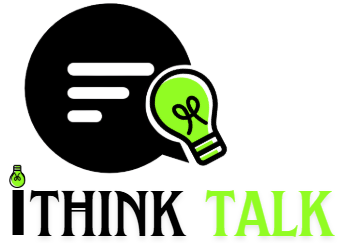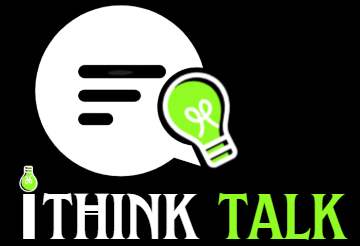The self-help genre, often dismissed as populist literature, has undergone a remarkable evolution since its inception, developing from morally anchored guides to psychologically informed explorations of personal potential. Central to this evolution is the genre’s persistent emphasis on optimism and mindset transformation—core themes that, while enduring, have been reimagined in tone, language, and conceptual scope across the decades. From the didactic formulations of early texts to the nuanced, often neuroscience-informed approaches of modern works, the self-help canon reveals a cultural and intellectual shift that mirrors broader social attitudes toward agency, resilience, and the self.
Foundations of Optimism: The Early Self-Help Canon
The origins of self-help literature are rooted in moral philosophy and Protestant work ethic, with Samuel Smiles’ Self-Help (1859) often cited as the foundational text. Smiles advocated for industriousness and perseverance, asserting that personal improvement was both a moral obligation and a social necessity. His prose was unambiguous, paternalistic, and grounded in the prevailing Victorian belief in character as destiny. The language of self-help in this period was formal, imperative, and frequently laced with religious undertones.
Moving into the early 20th century, the genre began to pivot toward psychological introspection. One of the pivotal texts in this transitional phase was Think and Grow Rich (1937) by Napoleon Hill. Here, the notion of a “positive mental attitude” became central. Hill’s work represents an early iteration of what would later be dubbed positive thinking books—works that prescribe a proactive, mentally disciplined approach to life’s challenges. Though still largely anecdotal and prescriptive, Hill’s rhetoric introduced the idea that thought precedes outcome, a conceptual precursor to cognitive-behavioral frameworks.
Dale Carnegie’s How to Win Friends and Influence People (1936) furthered this turn toward psychology, offering a manual on interpersonal effectiveness rather than moral rectitude. Carnegie’s style was more conversational, yet still directive. The emphasis on cultivating likability, empathy, and social poise marked a significant thematic expansion: success was no longer purely internal and individual; it was also relational and performative.
Language, Tone, and the Rise of Scientific Optimism
The post-World War II era saw a proliferation of self-help literature aimed at the burgeoning middle class, often couched in the language of American exceptionalism and upward mobility. Books such as Norman Vincent Peale’s The Power of Positive Thinking (1952) exemplify this period’s idealism. Peale, a minister, merged religious conviction with psychological optimism, positing that faith and affirmative thought could overcome adversity. His language was both inspirational and simplistic, favoring declarative affirmations over introspective nuance.
This era solidified the popularity of positive thinking books, which became cultural artifacts of mid-century American optimism. However, the genre’s lack of empirical grounding left it vulnerable to criticism from academic psychology, which at the time was veering toward behaviorism and empiricism.
The late 20th century began to witness a shift. As psychology embraced cognitive and humanistic approaches, so too did self-help literature. Authors such as Louise Hay (You Can Heal Your Life, 1984) and Tony Robbins (Awaken the Giant Within, 1991) integrated affirmations with emerging understandings of neuroplasticity, emotional intelligence, and behavioral conditioning. Robbins, in particular, adopted a hybridized tone—equal parts motivational coach and behavioral scientist—using anecdotal evidence, case studies, and rhetorical urgency to galvanize readers into action.
Contemporary Transformations: Neuroscience, Identity, and Mindset
In the 21st century, the self-help genre has matured, reflecting both advances in cognitive science and a more diverse sociocultural landscape. The language has shifted from prescriptive maxims to explorative inquiry. Books such as Carol S. Dweck’s Mindset: The New Psychology of Success (2006) and Brené Brown’s The Gifts of Imperfection (2010) exemplify this new wave. These texts emphasize vulnerability, self-compassion, and the power of reframing one’s narrative—concepts rooted in empirical psychology and trauma theory rather than anecdotal inspiration alone.
Dweck’s work, in particular, reframes optimism not as blind positivity but as a cognitive orientation toward growth. Her articulation of the “growth mindset” contrasts sharply with the static affirmations of earlier texts, introducing a more dynamic and process-oriented conception of self-improvement. Brown, on the other hand, deconstructs the myth of perfectionism and invites readers to embrace emotional complexity. Her language is empathetic, research-backed, and deliberately inclusive, marking a significant tonal shift from the genre’s earlier masculinized assertiveness.
Even aesthetically, modern self-help books differ. The stylized typography, minimalist design, and conversational prose mirror broader trends in digital culture, where authenticity and relatability are prized over authority and didacticism. This is evident in works such as Mark Manson’s The Subtle Art of Not Giving a Fck* (2016), which uses profanity and irony as rhetorical tools to subvert traditional self-help platitudes, even while reasserting the core message of cognitive responsibility and choice.
A Genre in Flux: From Monologue to Dialogue
One of the most notable evolutions in the self-help genre is its transformation from a monologue to a dialogue. Early texts assumed a hierarchical relationship between author and reader—the former as expert, the latter as novice. Contemporary works often acknowledge the fallibility of the author, embrace uncertainty, and invite readers into a co-creative process of meaning-making. This dialogical mode is not only stylistic but philosophical, reflecting postmodern sensibilities around subjectivity, plurality, and the social construction of identity.
Moreover, the genre is increasingly intersectional. Authors such as Ijeoma Oluo (Mediocre, 2020) and Resmaa Menakem (My Grandmother’s Hands, 2017) explore how trauma, systemic inequality, and racialized experience shape the psyche. These works expand the self-help paradigm by interrogating the sociopolitical conditions that frame personal growth, moving the conversation beyond the privileged individualism of earlier eras.
Conclusion
The self-help genre’s treatment of optimism and mindset transformation has evolved from moralistic exhortation to psychologically nuanced exploration. While early positive thinking books posited a largely universal path to success through affirmation and willpower, contemporary texts acknowledge the complexity of identity, the limits of agency, and the power of contextual factors.
What remains consistent is the genre’s aspirational core: the belief that change is possible, that the self is malleable, and that language—whether in the form of mantra, narrative, or cognitive reframing—plays a vital role in shaping reality. As the genre continues to diversify in voice and approach, it reaffirms not just the enduring appeal of self-betterment, but also the evolving ways in which we conceive of the “self” in a pluralistic and psychologically sophisticated age.
Also read: A psychological dive into Harlan Coben’s Think Twice—exploring suspense, identity, and memory through fiction.





